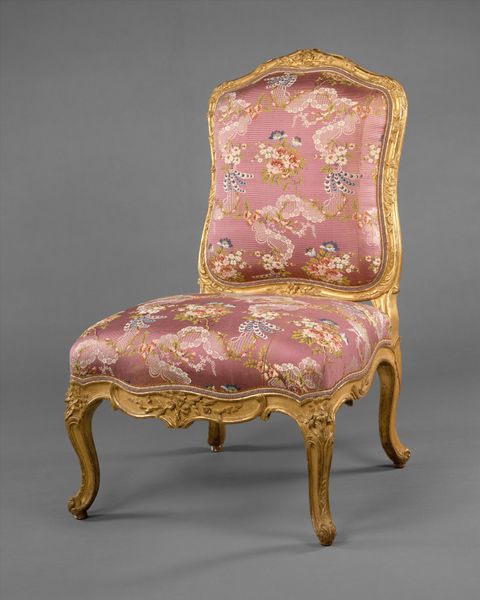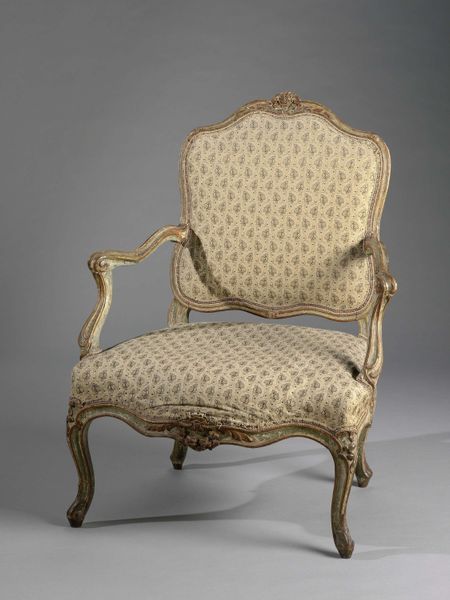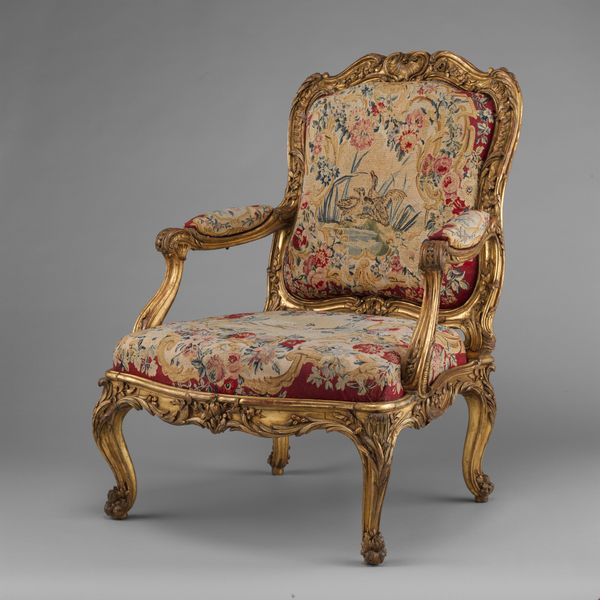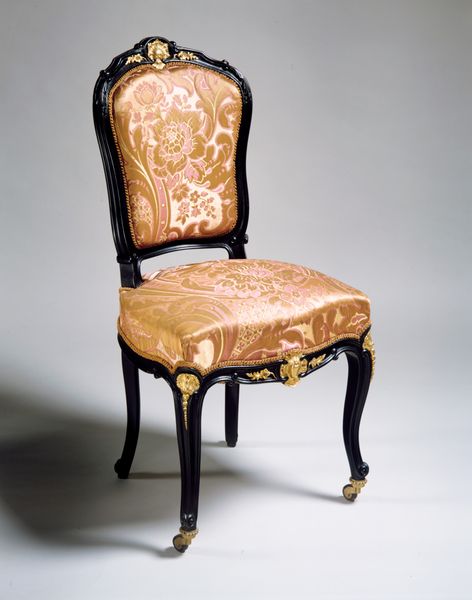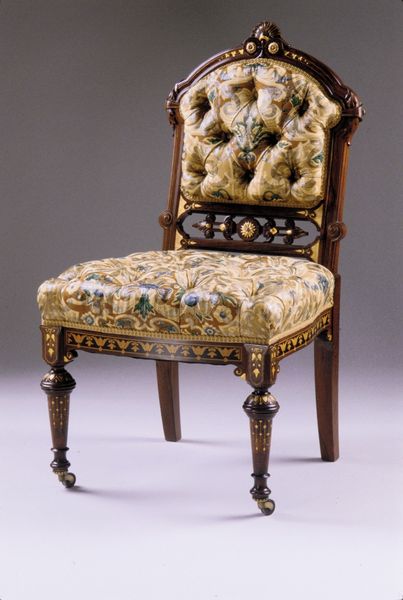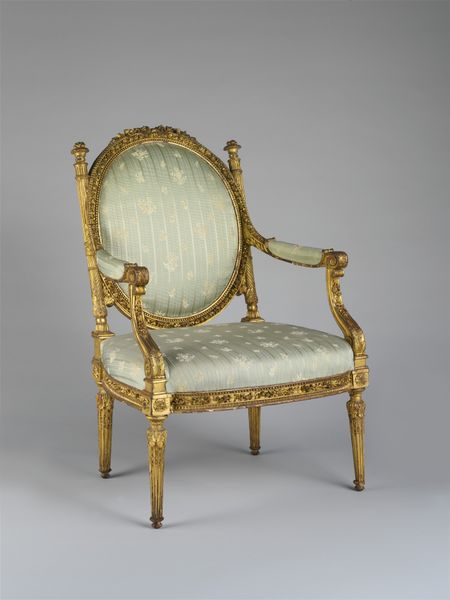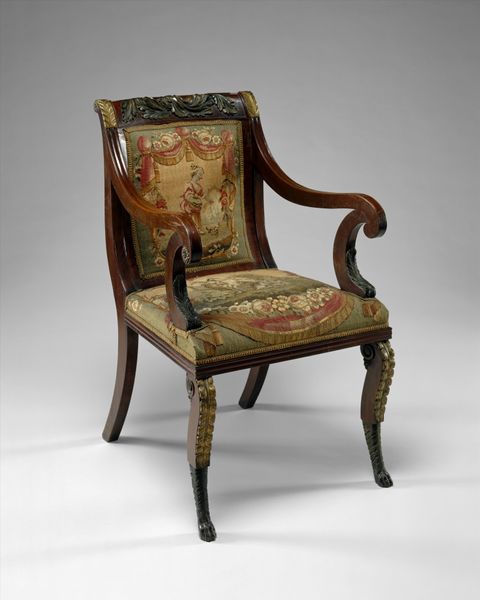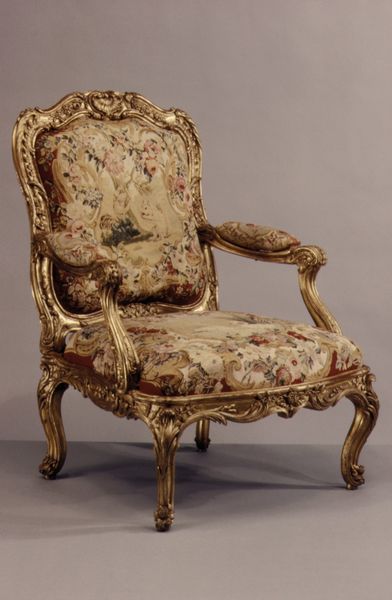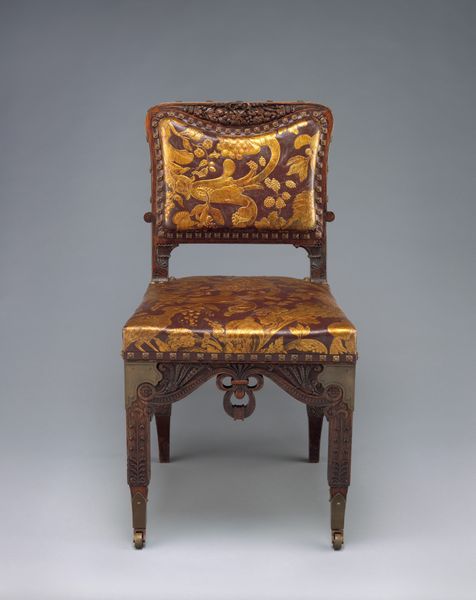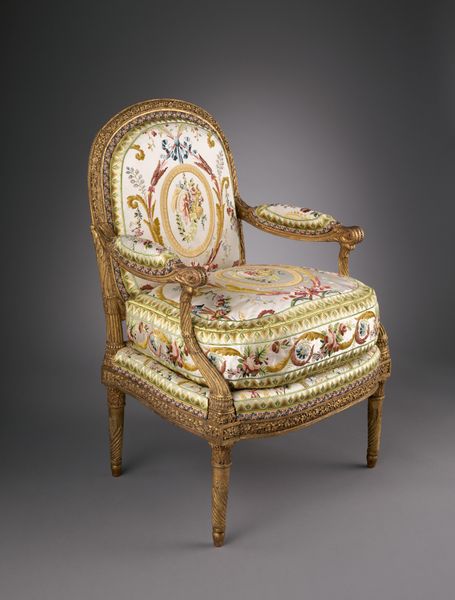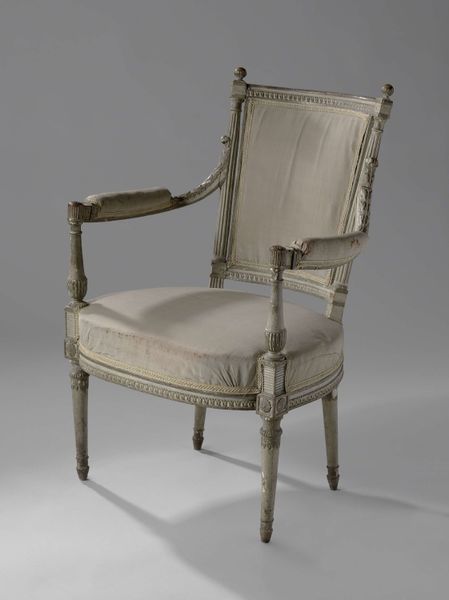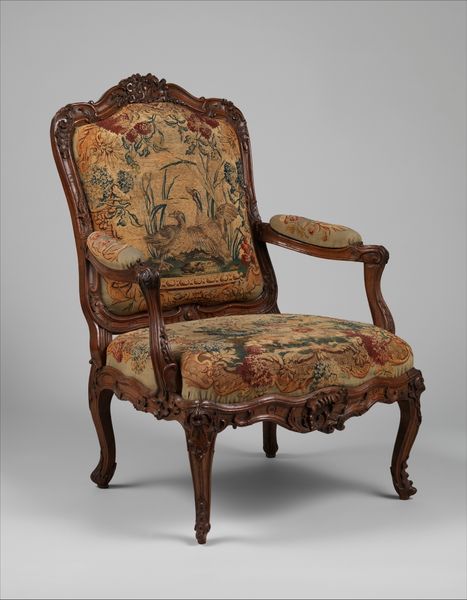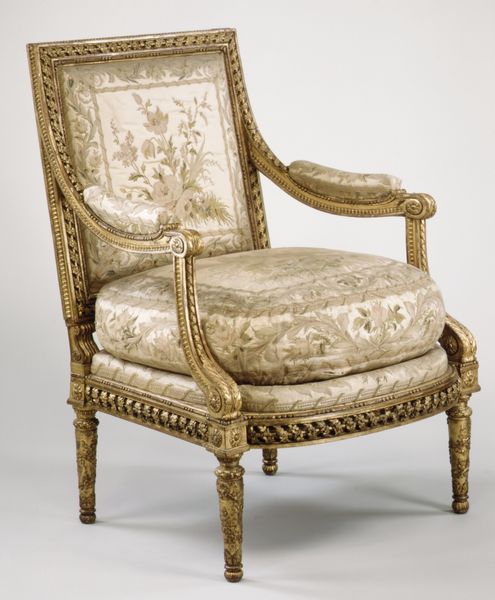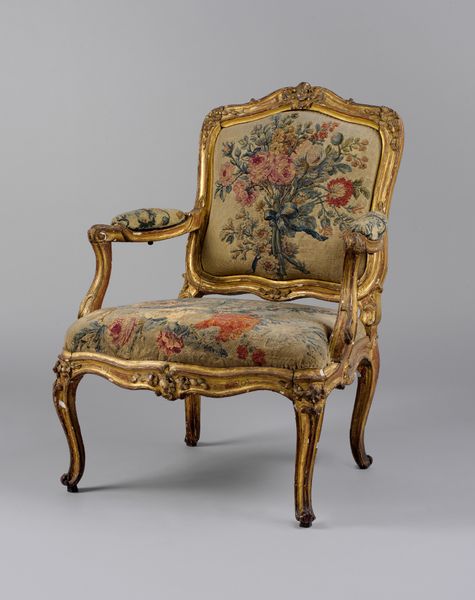
wood, gilding
#
portrait
#
romanticism
#
france
#
wood
#
gilding
#
decorative-art
Dimensions: 38 1/2 x 23 1/4 x 26 1/8 in. (97.8 x 59.1 x 66.4 cm)
Copyright: Public Domain
Editor: Here we have an armchair, crafted sometime between 1838 and 1848, and currently residing at The Met. It seems to be wood, adorned with gilding and gorgeous textile. It strikes me as opulent but in a slightly restrained way. What are your initial thoughts? Curator: Indeed, this armchair speaks volumes about the society that produced it. The opulence, as you noted, wasn't merely aesthetic, it was a declaration. We're looking at the French Romantic period. How do you think the industrial revolution might be reflected in design such as this? Editor: I can see how the gilding and fabric choice hints at wealth, but industrial revolution wise... maybe the level of detail reflects mechanized production to some degree? Curator: Precisely! Gilding, while luxurious, became somewhat more accessible thanks to advancements in production. What might an object like this signal about shifting social structures and aspirations during that time? Editor: It almost feels like it's trying to hold onto an aristocratic ideal but adapted for a wealthier middle class, maybe? It’s ornate, but it doesn't quite hit the same heights as furniture from the courts of, say, Louis XIV. Curator: Excellent observation! The "democratization" of luxury is a key point. The market shifted, and so did the production and reception of art. Aristocratic imagery had become a political matter. Who do you think owned something like this? What role did such objects play in their self-representation? Editor: Maybe it's less about bloodline and more about achieving status and displaying a certain level of...culture. It becomes an active choice. I hadn’t considered how this would affect public life back then! Curator: Exactly! Understanding these objects within their historical, social, and political context reveals the intricate relationship between art and society. Editor: I’m starting to think about objects like this less in isolation, and more as part of the culture creating it, I can see how that would affect everything else going on around them! Curator: That shift in perspective is precisely what studying art history helps us achieve. The art shapes the culture and in turn is shaped by it.
Comments
No comments
Be the first to comment and join the conversation on the ultimate creative platform.
